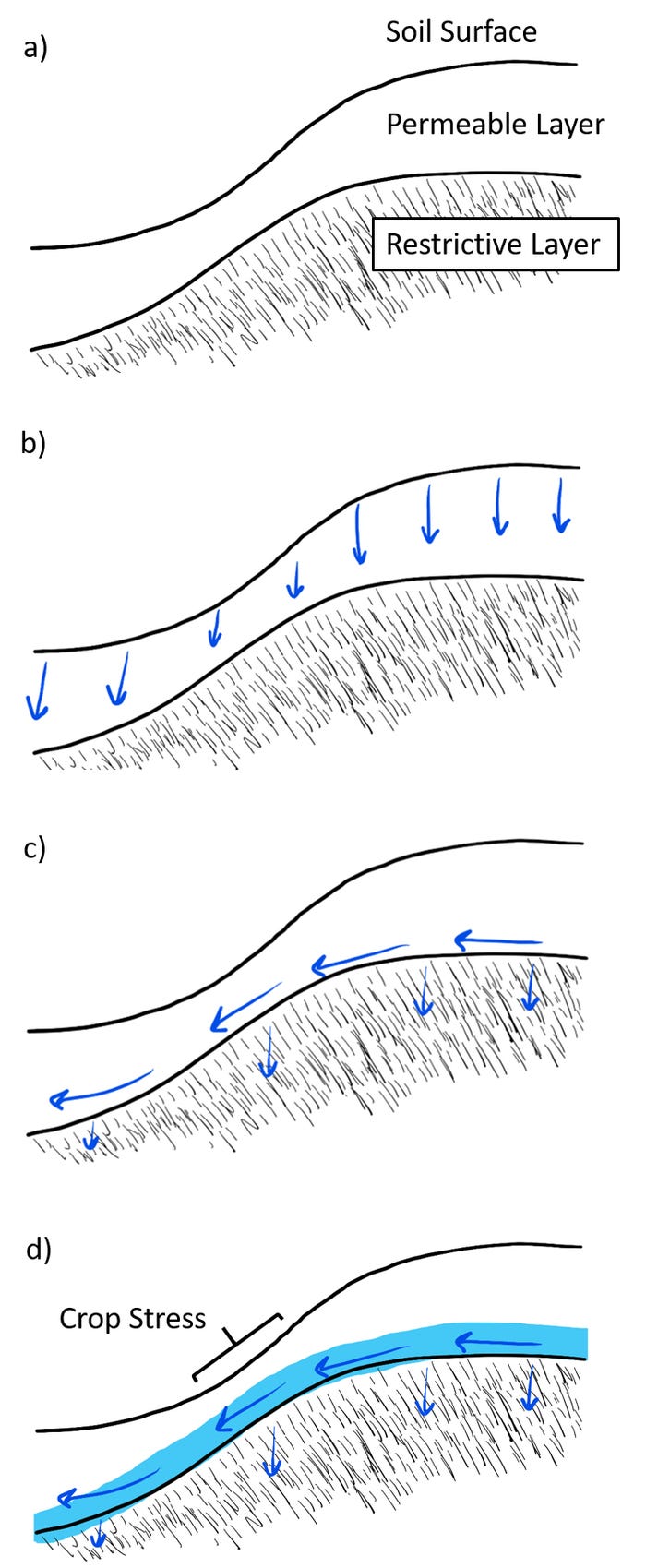
If you got lots of rain at some point in the season, you likely weren’t surprised if soybeans in low spots of flat fields turned lighter green or yellow. Saturated soils make it tougher for bacteria inside nodules to thrive and fix nitrogen from the air. Without an ample supply of nitrogen, soybeans back off their typical dark-green color.
What may have surprised you, says Shaun Casteel, Purdue University Extension soybean specialist, is if you saw similar symptoms on hillsides during the season, perhaps even later in the season. You’re more likely to see this in southern Indiana, or in parts of northern Indiana where the topography is also rolling, Casteel says.
You were basically seeing the same scenario play out in two different locations in the landscape, he says. “Soils became saturated in both situations,” he explains. “When soils are saturated, nodules don’t perform their job as well. You’ll likely see lighter-colored soybeans.”
Earlier in the season, the solution in both cases was drier weather. Later in the season, if nodules were already backing off on activity anyway, soybeans may not have regained their early-season color and vigor.
Effect of topography
Casteel called upon Jason Ackerson, a fellow Purdue agronomist and Extension soil specialist, to explain how saturated conditions can develop on the side of a hill similar to what you might find in a low spot in a level field that isn’t well-tiled.
What commonly happens to cause wetness on the side of a hill is that there is a restrictive layer underneath the permeable layer on top of the soil, Ackerson says. Normally when it rains, water permeates down through the soil. If there is a restrictive layer, it may be forced to flow sideways once it reaches the restrictive layer.

Restrictive layers vary across the state, Ackerson notes. In southern Indiana, it may be a fragipan, or dense soil formed in a loess-type soil. It could also be bedrock where it’s relatively close to the surface. Dense glacial till is more likely a restrictive layer in northern and central Indiana. Not all soils formed in glacial till are dense, but if there is a dense subsoil, water has difficulty penetrating.
If the permeable layer is relatively shallow and the restrictive layer is close to the surface, water may not only flow sideways, but also seep out once it reaches a point where it emerges on the side of the hill. Farmers often refer to them as sidehill seeps, Ackerson says. Some people assume that when water seeps out on the side of steep hills, they’re springs coming to the surface.
Soil near the surface becomes wet and stays wet, Casteel says. Nodulation becomes ineffective and plants run short on nitrogen. What results is a highlighter effect, where soybeans growing on saturated soils, even on the sides of hills, are lighter-green than soybeans on top of the hill where soils aren’t wet, he concludes.
About the Author(s)
You May Also Like




